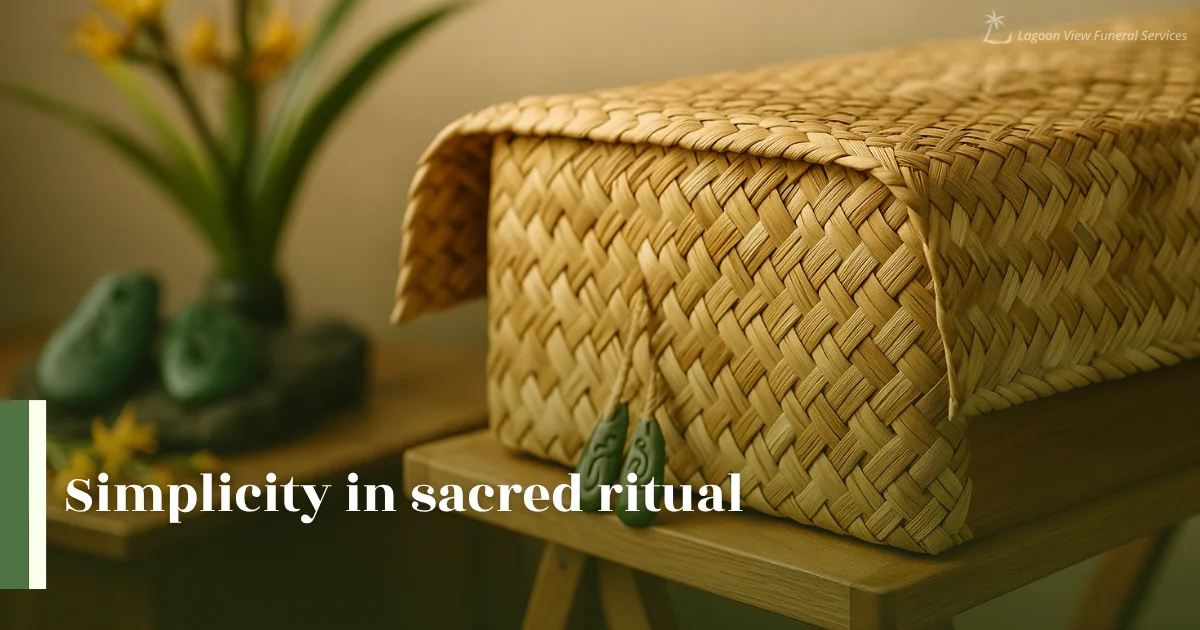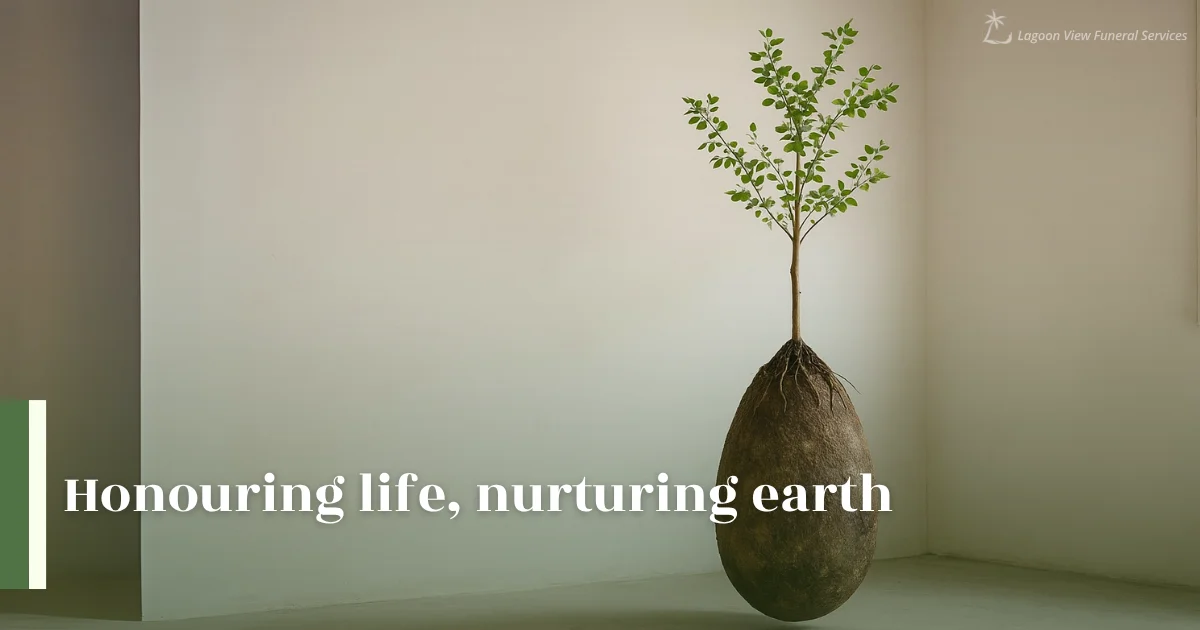Burial is more than a final farewell—it is a deeply symbolic, emotional, and cultural act that reflects a community’s respect for life and death. In many indigenous cultures, the traditional burial ceremony remains a sacred rite, rooted in spiritual belief and ancestral connection. These customs are not simply about interment; they are powerful expressions of honour, remembrance, and belonging.
Traditional burial practices, especially those grounded in indigenous heritage, offer a timeless tribute to those who have passed. Even as contemporary approaches to death care evolve, these ceremonies endure, proving their continued relevance and importance.
Understanding traditional burials is not only a way to honour a loved one but also to preserve and reconnect with cultural identity. For families seeking meaningful, respectful ways to say goodbye, these time-honoured rituals offer guidance and solace.
What is Traditional Burial?

Traditional burial refers to the interment of the deceased in a grave, usually accompanied by culturally significant rituals and customs. While modern methods focus heavily on convenience or environmental impact, traditional burial is steeped in symbolism, community involvement, and spiritual practice.
Core Elements of a Traditional Burial
Typically, traditional burial includes the preparation of the body, a vigil or period of mourning, a ceremonial service, and the final act of interment. These elements serve both practical and spiritual purposes—preserving the dignity of the deceased while providing emotional space for grieving.
- Body Preparation: In many cases, embalming is undertaken to preserve the body, allowing extended periods for family and friends to pay respects.
- Vigil or Wake: A vigil, often held over several days, allows mourners to visit the deceased, offer their farewells, and participate in storytelling, prayers, and shared meals.
- Ceremonial Service: A formal service, either spiritual or communal in nature, usually takes place before burial. This is where final speeches, blessings, and traditional rites are performed.
- Interment and Memorialisation: The burial often occurs at a site of familial or spiritual significance, accompanied by a marker or headstone to honour the deceased.
A Ceremony of Connection
In Māori culture, the tangihanga is a powerful communal ritual that goes beyond a private funeral. It takes place at the marae (a communal gathering space), where the deceased is presented to the community. The ceremony is marked by speeches, songs, prayers, and shared memories, allowing friends and family to express their grief and offer their farewells in a collective manner.
During the tangihanga, the presence of whānau (extended family) and friends is crucial. It strengthens the sense of communal support, ensuring that mourning is a shared experience rather than an isolated one. This bond between the living and the departed reflects the Māori view of death as a natural transition, where the spirit returns to the ancestors, preserving a continuous connection across generations.
History of Burial Rituals

Burial has long been a defining ritual of humanity. From prehistoric graves to sacred burial caves and ornate tombs, the act of laying someone to rest has always carried deep significance.
Early Burial Traditions
Early burial practices were often straightforward—shallow graves or covered bodies left near dwellings. However, as societies developed spiritual beliefs about the afterlife, burial evolved into a formal, sacred rite. The construction of burial mounds, ceremonial wrapping of bodies, and the inclusion of personal belongings in graves signified a growing awareness of death’s importance.
Indigenous cultures, especially those rooted in oral traditions, have preserved burial customs over centuries. These practices were, and still are, designed to protect the spirit of the deceased and honour their place within the community.
Honouring the Ancestors
Traditional Māori practices include spiritual beliefs about the transition between this life and the next. In the past, after burial, the bones of the deceased were often exhumed, cleaned, and placed in secret locations to protect them from desecration. This ritual highlighted the sacredness of the remains and the belief that death is not an end, but a return to the ancestors.
How Burial Customs Vary Across Cultures
While the goal of burial is universal—honouring the dead—its execution varies significantly across cultures.
Unique Global Traditions
In some regions, cremation or water burials are the norm. Others prefer sky burials or interments in above-ground tombs. Some indigenous cultures place the deceased in elevated burial houses, while others return the body to the earth in natural, unmarked settings.
In contrast, Māori traditions emphasise a communal, ceremonial process involving both the physical and spiritual preparation of the deceased. The tangihanga is a cornerstone of this culture, and it involves many extended rituals, each steeped in tradition.
A Shared Theme: Respect and Remembrance
What unites all burial customs, regardless of region or ritual, is the deep respect they show to the deceased. Whether through song, offerings, storytelling, or prayer, burial practices reflect each community’s beliefs about death, continuity, and honour.
Emotional Significance of Traditional Burials
For many families, traditional burial is more than a method of interment—it is a pathway to healing.
Providing Comfort and Closure
Traditional rituals offer a structured environment for mourning, which can be immensely comforting during a time of loss. They invite emotional expression, spiritual reflection, and familial support, all of which contribute to a healthy grieving process.
During a tangihanga, mourners are encouraged to speak directly to the deceased, share memories, and perform cultural rituals. These acts allow loved ones to confront their grief and find closure through shared experience.
A Legacy of Love
Honouring the deceased through traditional burial practices ensures that their memory is preserved for future generations. These rituals allow families to reflect on the life and legacy of their loved ones, creating a lasting tribute that resonates deeply within the community. In doing so, the deceased continue to live on in the hearts and minds of those they left behind.
The process of honouring the deceased also fosters a strong connection to one’s cultural identity, reinforcing the values, traditions, and memories passed down through generations. These acts offer not only comfort but also a sense of pride, as families uphold practices that have sustained their communities for centuries. Through these ceremonies, the deceased remains an integral part of the family’s story and cultural heritage.
Modern Trends in Burial Practices

Modern burial practices are evolving, but traditional burials continue to hold significance. New trends focus on eco-friendly alternatives and personalised services.
Embracing Eco-Conscious Alternatives
Eco-friendly burials, which use biodegradable materials and avoid embalming fluids, are becoming more popular. These methods focus on returning the body to the earth in a natural state, aligning with spiritual beliefs about the life-death cycle.
Personalisation and Tradition
Modern families often seek a blend of personalisation and tradition, incorporating technology, photo displays, or custom music into otherwise traditional ceremonies. Funeral services today may also reflect more flexible timelines, digital memorials, and community outreach.
Despite these modern adaptations, many still choose traditional burial to preserve cultural identity and uphold long-standing family customs. The enduring appeal of ceremony, community involvement, and spiritual reverence remains strong.
Planning a Traditional Burial: What to Consider
Planning a traditional burial requires thoughtfulness and cultural sensitivity. It involves both emotional preparation and logistical planning.
Choosing a Resting Place
One of the most important considerations when planning a traditional burial is the burial site. Families often select locations with spiritual or familial significance, such as ancestral lands or community graveyards, to honour the deceased’s legacy.
Burial in such meaningful locations not only respects tradition but also strengthens the connection between past and future generations. It is a place where both memory and heritage are preserved.
Ritual and Ceremony Planning
Each aspect of the ceremony, from who will speak to the rituals performed, should align with the values and wishes of both the deceased and their family. A well-planned ceremony ensures the occasion is meaningful and reflective of the deceased’s life.
Collaborating with funeral directors who understand cultural and indigenous customs can help ensure the ceremony is carried out with authenticity and respect. This thoughtful approach ensures the traditions are preserved and respected.
Creating a Meaningful Farewell
From selecting the casket to designing the headstone, every decision made contributes to a final tribute that is personal and honouring. These choices, guided by cultural practices, help to reflect the deceased’s life and legacy.
Traditional ceremonies also include moments for sharing food, offering gifts, and honouring the departed through spoken tributes and ceremonial songs. These acts are not only symbolic—they foster healing, reflection, and a deeper connection with the deceased.
The Timeless Value of Traditional Burial
Traditional burial ceremonies continue to offer powerful, meaningful ways to honour loved ones. Rooted in ancient practices and carried by cultural wisdom, these rituals speak to the heart of who we are as individuals and as communities. While modern funerals may adapt with time, the essence of traditional burial—the reverence, the remembrance, the ritual—remains timeless.
By embracing traditional burial customs, families ensure that their loved ones are honoured in a way that respects both the individual and the culture they came from. Whether you are beginning to plan a memorial service or simply exploring your options, understanding traditional burial offers a rich and rewarding perspective—one that connects past, present, and future in a deeply human way.